The Temple of Literature - The first University of Thang Long Capital
Undergo over 1000 years of history, the Temple of Literature still be retained ancient beauty with architectural features of many eras. It is a typical cultural-historical sites and the most important construction of Hanoi capital as well as all country.
Temple of Literature Architecture
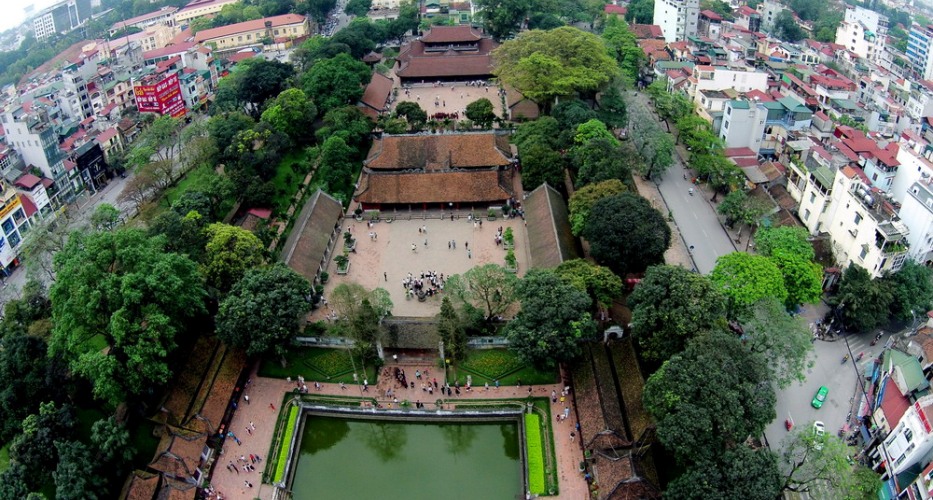
Overview of The Temple of Literature
Studying in Temple of Literature
Students are mainly those who passed “Huong” exam, through an examination in “Bo Le” to entrance Imperial Academy to study for preparing next exams: “Hoi” exam and “Dinh” exam. Students were divided into three classes: Upper, Middle and Lower. Minimum learning period of time was 3 years and maximum was 7 years. Main learning process included listening lectures, commenting and writing literature.
Candidates had minor tests each month and four major tests per year. Success in the exams, certified by the "Ministry of Rites" qualified them to sit the national exam, the "Hoi". Success at the "Hoi", students took part in the exam which was held at Royal Palace – the “Dinh” exam, questioned and finally marked by the King himself. Those who passed “Dinh” exam was classified into three classes: The First Dr (Poinsettias – “Trang nguyen, First-rank doctorate second laureate – “Bang nhan”, First-rank doctorate third laureate – “Tham hoa”), The Second Dr (“Hoang Giap”) and The Third Dr (PhD).
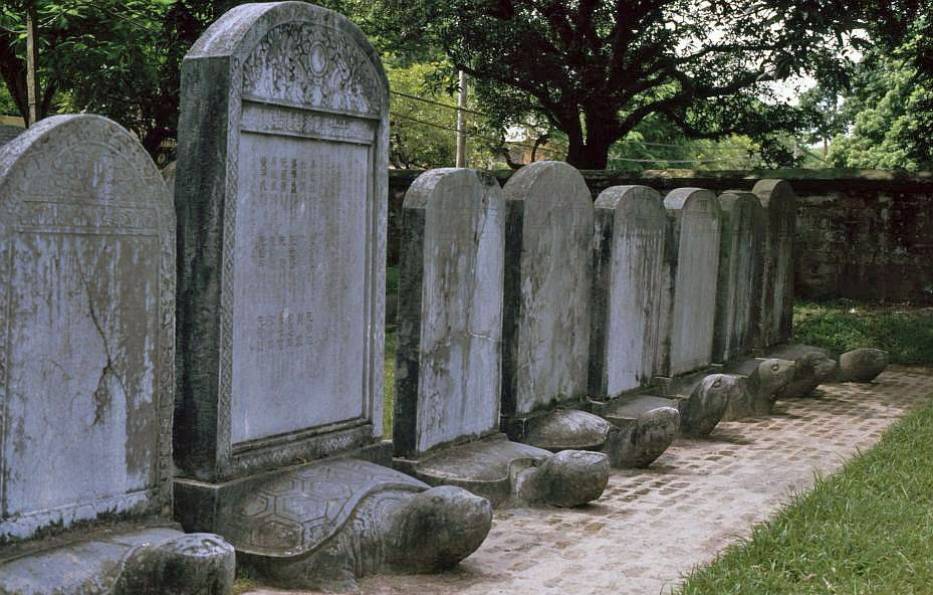
The holy turtles in The Temple of Litarature
Examination history in Vietnam started from 1075 until last Confucian examinations in 1919, total 2,898 people passed great faculty - “Dai Khoa”. The fewest passed students faculty had 3 people, the highest passed students faculty had 62 people. The youngest passed student was Poinsettias Nguyen Hien (examination in 1247) at age of 13, the oldest passed student was Dr. Quach Dong Dan (examination in 1634) at 68 years old.
Doctorate Headstone
Doctorate Headstone in Nham Tuat faculty under 3rd Bao Dai indicated clearly the importance of the training of talents and encouraging students: “Talented people are the power of our country. The power is prosperous making powerful nation, the power is weakened leading lower nation situation. So Kings always considers choosing intelligent people and fostering talents as urgent work. Therefore, building headstones at the entrance of “Thai Hoc” is the way to incentive people across country to study, practice and be enthusiastic to help country. This building headstones is not just nominal prefer”.
Doctorate Headstone is located on the back of turtles. Turtle is one of four mascots: “Long”, “Ly”, “Qui”, “Phung”. Turtle has long life, strong healthy, so putting Doctorate headstone on the back of turtles has shown the respect talented people and lasted forever.
Temple of Literature at present
Every year, there are a lot of cultural and festival activities happened at Temple of Literature such as: incense offering to the sages, people chess playing, Folklore, poetry commenting, calligraphy exhibition, spring poetry introduction, etc.

Vietnamese students often keep their last memories of student life at The Temple of Literature
In the next plan, Temple of Literature is being gradually piloted cultural programs with bold ethnic groups as holding the club "Thang Long Poetry Forum", club "People's teacher and excellence teacher," building "Museum of Hanoi celebrities".
Take a Look at Our
featured tours
Vietnam Cambodia Tour Package in 3 weeks - Journey of Cachets
Itinerary: Hanoi - Sapa - Halong - Hoian - Nha Trang - Saigon - Mekong Delta - Phnom Penh - Siem reap
Vietnam Cambodia 3 weeks is a reasonable trip that is filled with the luxury experience as well as exciting activities. With 2 weeks going along...
Vietnam Adventure Travel - 9 Days in Northern Mountain of Vietnam
Itinerary: Hanoi - Sapa (Bac Ha - Lao Chai - Ta Van - Supan - Muong Hoa) - Halong Bay
The Northern Vietnam – a land of heritage sites and original culture will be arranged tidy in a 09 day Vietnam adventure travel. Though you...
Vietnam Highlights - Itinerary of Culture and Landscapes in 2 weeks
Itinerary: Saigon - Cai Be - Vinh Long - Sa Dec - Can Tho - Hue - Da Nang -Hoi An - Hanoi - Sa Pa - Halong Bay
Highlights: Explore along Vietnam with the unforgettable highlights for the first time. Experience Vietnam's original culture...
Explore Vietnam in the north and center in 10 days (By bus & train)
Itinerary: Hanoi - Halong Bay - Ninh Binh - Hue - Danang - Hoian
Highlights: Get overview of Northern and Centre Vietnam within 10 day trip with the most highlights and attractions Touch the soul of Vietnam...
Hanoi Sightseeing by a Bike Tour
Itinerary: The Old Quarter - Ho Chi Minh Mausoleum - Tao Sach Pagoda - Biking Around - Tay Ho Temple - Tran Quoc Pagoda
Hanoi is beloved by travelers all over the World thanks to its lightly charming beauty. You are easily fallen in love with the streets of ancient...
Hanoi Cultural Day Trip - Best Tour in the Center
Itinerary: The Old Quarter - Vietnam Museum of Women - Temple of Literature - West Lake - Dong Xuan Market
Hanoi is known as one of the most charming capital of the World by its exotic beauty that is mixed between the ancient French architectures in The...
related destinations
Hanoi Street Artworks: Phung Hung Murals and Ceramic Mosaic Murals
With nowadays hustle and bustle life, Hanoi is known as a destination of old, peaceful, and profound beauty....Top 4 Resorts with Playground for Kids nearby Hanoi City Center
The hustle and bustle life of people who lives in big cities leading to the demand of relaxation and...(+84) 3 87 86 68 52
- Vietnam Cambodia 3 week package visits the Temple of Literature.
- 2 weeks of culture in Vietnam and Cambodia visits Temple of Literature.
- Visit Van Mieu Quoc Tu Giam in Vietnam 14 day itinerary
- Experience the hightlights of Vietnam in 2 week journey
- Temple of Literature in the most beguiling vacation with 10 days in Vietnam.
- Hanoi City Tour & its first university.
Testimonials
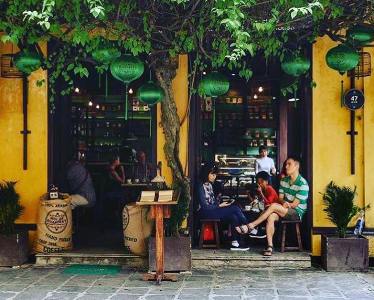
Excellent arrange, a really adapted proposal to our request
We were a group of 3 couples, chose FarEastour for our trip in Vietnam. We had some wishes:...
Highly recommended travel agency
We are very happy with our 22 days trip organized by Far East Tour! Our travel consultant,...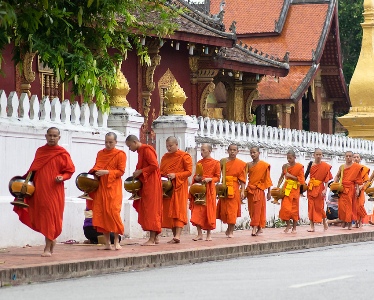
Dear Esther, I had a great time in Asia! You did arrange everything so perfect. Thank you so...

Touch with you again and remembering our unforgettable trip
Dear Christine, Hello, is good getting in touch with you again and remembering our unforgettable...
We had a very pleasant tour on Douce Mekong
Dear Wind, Thank you once again for your assistance, we had a very pleasant tour on Douce...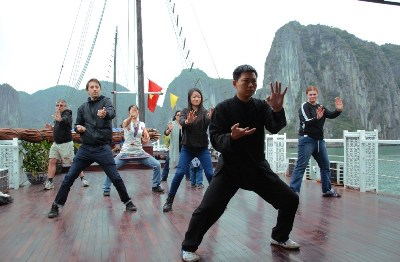
The trip to Ha Long Bay exceeded my expectations
Morning Esther, Now that I have returned to Australia I just wanted to send you a quick...
My trip to Sapa with your company has been great
Thanks a lot for your collaboration. About my trip to Sapa with your company has been great. The...
13 Days From Hanoi to Mekong with lots of happiness
We have been very happy having Mr Cong as a guide for Hanoi, and our cruise in Halong Bay was...
We asked Far East to put together a tour of Vietnam from north to south. They promptly emailed a...

Very professional and experienced travel agent
Very friendly and professional travel agent. Good advice given on what type of journey suits you....
I recommended your company to our travel agent in Germany
Dear Christine, Everything was fine, also the food. And for the vegetarian they tried special... Vietnam Tours
Vietnam Tours Vietnam Touren
Vietnam Touren Voyage au Vietnam
Voyage au Vietnam 越南旅游
越南旅游 越南旅遊
越南旅遊






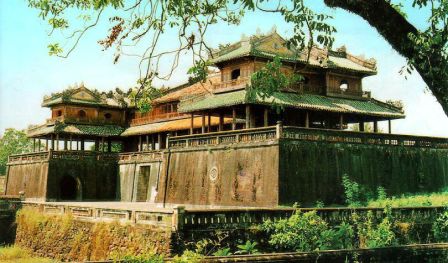
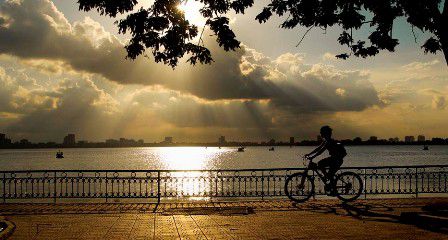
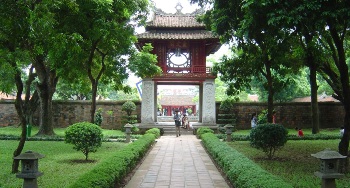

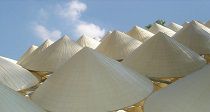




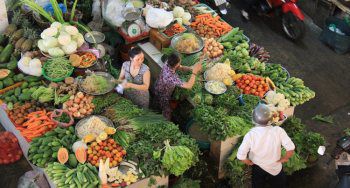

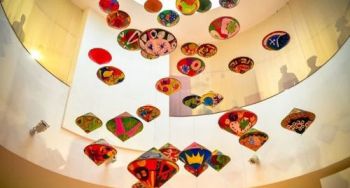
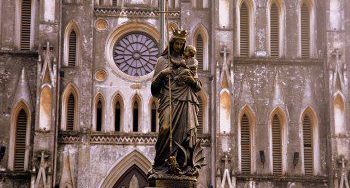



24/7